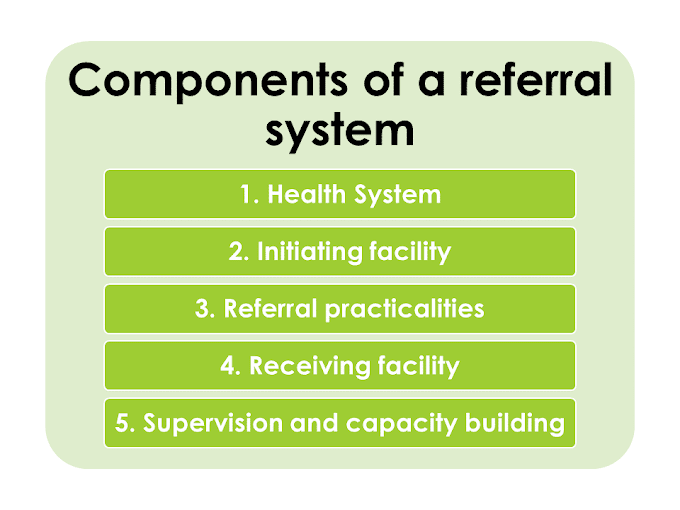The system used for storing vaccines in good condition is called the cold chain. The cold chain is a system of storage and transport of vaccines at low temperature from the manufacturer to the actual vaccination site.
In order to maintain a reliable vaccine cold chain at the peripheral level, the following key procedures must be observed:
- Store vaccines and diluents within the required temperature range at all sites.
- Pack and transport vaccines to and from outreach sites according to recommended procedures.
- Keep vaccines and diluents within recommended cold chain conditions during immunization sessions.
Temperature requirements for vaccines
Vaccines are sensitive biological products. Some vaccines are sensitive to freezing, some to heat and others to light. Vaccine potency, meaning its ability to adequately protect the vaccinated patient, can diminish when the vaccine is exposed to inappropriate temperatures. Once lost, vaccine potency cannot be regained. To maintain quality, vaccines must be protected from temperature extremes. Vaccine quality is maintained using a cold chain that meets specific temperature requirements. It is essential that all those who handle vaccines and diluents know the temperature sensitivities and the recommended storage temperatures for all the vaccines in the national schedule.
Sensitivity to heat and freezing of vaccine
On the basis of heat sensitivity of vaccines, the vaccines are grouped into six categories. The most heat sensitive vaccines are in Group A and the least heat sensitive vaccines are in Group F.
Among the vaccines, polio is the most sensitive to heat, requiring storage at minus 20 degree C.
Sensitivity to light
Some vaccines are very sensitive to light and lose potency when exposed to it. Such vaccines should always be protected against sunlight or any strong artificial light, and exposure should be minimized. Vaccines that are as sensitive to light as they are to heat include BCG, measles, measles-rubella, measles-mumps-rubella and rubella. These vaccines are often supplied in dark glass vials that give them some protection from light damage; but they should be kept in their secondary packaging for as long as possible to protect them during storage and transportation.
Storage of vaccines in India
In general all vaccines must be stored under the conditions recommended by the manufacturer in the literature accompanying the vaccine, otherwise they may become denatured and totally ineffective. vaccines must be protected from sunlight and prevented from contact with antiseptics.
At the health centre, most vaccines can be stored up to 5 weeks if the refrigerator temperature is strictly kept between 2 and 8 degree C. Reconstituted BCG and Measles vaccines can be kept at +2 degree C to +8 degree C for maximum of 4 hours and JE vaccine for 2 hours. Nurse write the time of reconstruction on the label of these vaccine vials and discard them after 4 hours (2 hours for JE vaccine).
Do not keep any used vials in the cold chain. Return the unused vaccine vials from session site to the PHC on the same day in the cold chain. Keep the box labeled 'returned unused' in the ILR for all unused vaccines that can be used in the subsequent session, but discard vaccines that have been returned unopened more than three times.
Cold chain equipment in India
[A] Walk-in cold rooms
[B] Deep freezers
[C] Ice-lined refrigerators (ILR)
Ice-lined refrigerators are kept at the Primary Health Centre (small) and district level (large). The cabinet temperature is maintained at +2 degree C to +8 degree C. At the primary health centre (PHC) level, ILR are used for storing all national immunization schedule vaccines. ILR are top-opening, they can hold the cold air inside better than front-opening refrigerators. All vaccines must be kept in the basket of the ILR along with diluents. Keep space between boxes for circulation of cold air.
The temperature of ILR should be recorded twice a day. In case of equipment failure or electric supply failure, vaccines should be transferred to ice boxes and then to alternate vaccine storage.
There are some DOs and DONTs for the use of ILR/freezer.
DOs: keep the equipment in cool room away from direct sunlight and at least 10 cm away from the wall; keep the equipment levelled; fix the equipment through voltage stabilizer; keep vaccines neatly with space between the stacks for circulation of air; keep the equipment locked and open only when necessary; if vaccines are kept in cartons, make holes on the sides of the cartons for cold air circulation.
DONTs: do not keep any object in the ILR; do not store any other drug; do not keep drinking water or food in them; do not keep more than one months requirements at PHC level; and do not keep date expired vaccines.
[D] Cold boxes
A cold box is an insulated container that can be lined with water packs to keep vaccines and diluents in the required temperature range during transport or short-term storage. Different models of cold boxes have different vaccine storage capacities and need different numbers and sizes of water packs.
[E] Vaccine carriers
Vaccine carriers are used to carry small quantities of vaccines (16-20 vials) for the out of reach sessions. It has four ice packs for maintain of cold chain. The carriers should be close tightly.
[F] Day carriers
Day carriers are used to carry small quantities of vaccines (6-8 vials) to a nearby session. Two ice packs are used in day carriers. It is used only for few hours period.
[G] Ice packs
The ice packs contain water and no salt should be added to it. The water should be filled up to the level marked on the side. If there is any leakage such ice packs should be discarded.
The risk of cold chain failure is greatest at sub-centre and village level. For this reason, vaccines are not stored at the sub-centre level and must be supplied on the day of use.






1 Comments
I Like to add one more important thing here, The global cold chain market is expected to reach more than US$ 340 billion by 2026 at a CAGR of 7.8%.
ReplyDelete